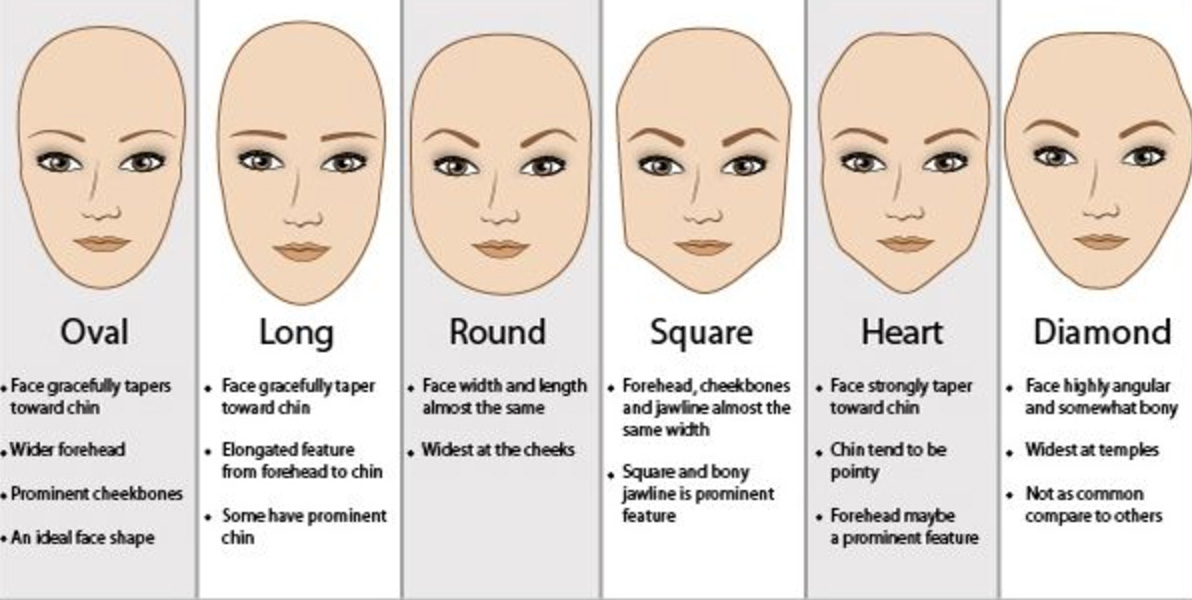The Least Attractive Face Shape: Are You at Risk of… What Exactly?
The quest for the “perfect” face shape is a long-standing fascination. While beauty standards are subjective and constantly evolving, certain facial features and proportions have historically been associated with attractiveness. This article delves into the concept of “less attractive” face shapes, exploring the common shapes often cited, and discussing the factors that contribute to perceptions of attractiveness. Importantly, we’ll move beyond superficial judgments and examine what risk might be associated with these shapes, focusing on potential health implications and societal biases.
Understanding Face Shapes: A Visual Guide
Before we delve into the discussion of “least attractive” shapes, let’s clarify the common face shape categories. Understanding these shapes is crucial to assessing your own and understanding the context of the conversation:
- Oval: Often considered the “ideal” shape, characterized by balanced proportions, with the forehead slightly wider than the chin.
- Round: The face width and length are roughly equal, with full cheeks and a rounded jawline.
- Square: A strong jawline, broad forehead, and equal width and length define this shape.
- Heart: Wider forehead that tapers down to a pointed chin, often with a defined cheekbone.
- Diamond: Wide cheekbones, a narrower forehead, and a pointed chin create this shape.
- Oblong/Rectangle: Similar to oval but longer, with a more pronounced forehead and chin.
- Triangle/Pear: Wider jawline and a narrower forehead.
Commonly Cited “Less Attractive” Face Shapes: A Critical Look
While beauty is in the eye of the beholder, certain face shapes are sometimes perceived as less desirable in mainstream media and societal beauty standards. It’s important to reiterate that this perception is subjective and influenced by cultural trends. However, these shapes are frequently mentioned in discussions:
- Round: A round face can sometimes be associated with youthfulness, but in some cultures, it can be perceived as less structured or lacking definition.
- Square: While often considered strong and masculine, an extremely square face can sometimes be seen as harsh or less feminine, depending on the context.
- Triangle/Pear: The wider jawline and narrower forehead can be perceived as imbalanced by some.
Important Note: These are generalizations. Individual features like skin tone, bone structure, and overall facial symmetry play a significant role in overall attractiveness.
Beyond Aesthetics: What “Risk” Does a Face Shape Pose?
Focusing solely on attractiveness is a narrow view. Let’s explore the potential “risks” associated with certain face shapes from a broader perspective:
- Health Implications:
- Obesity and Round Faces: A round face can sometimes be associated with higher body fat percentage, increasing the risk of health issues like cardiovascular disease and diabetes.
- Sleep Apnea and Square/Round Faces: Individuals with wider necks and rounder faces may be at a higher risk of obstructive sleep apnea.
- Societal Bias and Discrimination:
- Beauty Standards and Opportunities: While illegal, there is evidence of bias in hiring, promotions, and social interactions based on perceived attractiveness.
- Stereotyping: Certain face shapes can be associated with specific stereotypes, which can lead to unfair treatment or prejudice.
The Importance of Self-Acceptance and Well-being
Ultimately, the “least attractive” face shape is a subjective concept. Rather than focusing on fitting arbitrary beauty standards, prioritize:
- Overall health and well-being: Maintain a healthy lifestyle through proper nutrition, exercise, and adequate sleep.
- Self-care: Practice self-love and embrace your unique features.
- Confidence: Confidence is the most attractive quality. Focus on developing your strengths and cultivating a positive self-image.
FAQs: Frequently Asked Questions
1. Does my face shape determine my attractiveness?
No. Attractiveness is subjective and influenced by many factors beyond face shape, including personality, confidence, grooming, and overall health.
2. Can I change my face shape?
Some aspects of face shape can be altered through cosmetic procedures like fillers or surgery. However, these are personal decisions that should be made after careful consideration and consultation with a medical professional. Lifestyle changes, such as weight loss, can subtly affect the shape of your face.
3. What are the health benefits of a symmetrical face?
While facial symmetry is often associated with attractiveness, it can also indicate good health and genetic stability. However, it’s not a guarantee of overall health.
4. How can I improve my facial appearance?
Focus on overall health, skincare, and grooming. Consult with a dermatologist or esthetician to address specific concerns. Remember that self-acceptance is key.
5. What is the “golden ratio” in facial aesthetics?
The golden ratio, or Phi, is a mathematical concept used to assess proportions and symmetry. While it’s used in some beauty analyses, its significance is debated, and it shouldn’t be the sole measure of attractiveness.
Conclusion: Embracing Individuality
The concept of a “least attractive” face shape is rooted in subjective beauty standards and societal pressures. Instead of dwelling on perceived imperfections, focus on cultivating a healthy lifestyle, practicing self-love, and embracing your unique features. Attractiveness is multifaceted, and true beauty lies in confidence, well-being, and the celebration of individuality. Prioritize your health and happiness, and your natural beauty will shine through.




